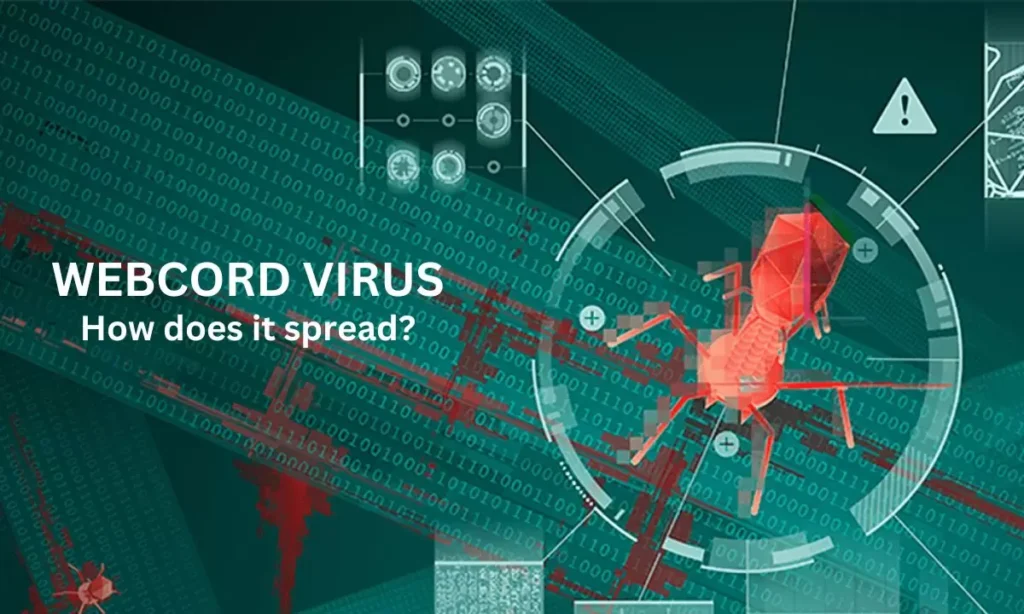The rise of the WebCord virus brings a meaningful risk to Dispatch clients posing a risk to their cyber security and secrecy. Cybercriminals formed and released this harmful program which aims to unsuspecting individuals of the Discord group by taking weaknesses in both the platform and users’ devices. Grasping the roots spread routes and assault approaches of the NetSnare program is pivotal for clients to guard themselves against feasible damage.
This article delivers a profound investigation of the WebCord virus plunging into its roots, how it circulates assault techniques, ongoing events and proactive steps persons can take to shield their Discord and devices.
Origins of WebCord Virus
The WebCord virus first appeared in early 2020. A hacker group called Anthropic wanted to cause problems online. They made the virus to steal information from people’s computers and phones. Anthropic spread WebCord quietly at first. Only a few devices got infected in the beginning.
But the virus soon grew quickly and out of control. It spread through links and files shared on Discord. Some people clicked without knowing the danger inside. Within weeks WebCord had infected hundreds of accounts across many countries. Security experts worked hard to stop it from spreading further. But understanding where it began helps protect against new threats in the future.
Where did the WebCord virus originate?
The roots of the WebCord virus are usually traced back to cybercriminals and malign forces who fabricate and disseminate malware to endanger DisCord users’ devices and profiles.
These persons or bunches may work from different areas all over the planet and frequently utilize sophisticated strategies to create and distribute the virus.
How does it spread?

The WebCord virus spreads very easily through Discord. It can hide inside links shared between friends. If someone clicks a bad link the virus quietly installs itself. Soon it lies hidden watching and waiting inside their computer.
From there WebCord looks for more ways to spread. It searches for open Discord chats and private messages. Any files or links sent are at risk of carrying the hidden virus. It even changes web page addresses to trick users. Stealthily it spreads from one person to another growing stronger the more it infects. Constant vigilance is needed to stop the silent spread.
What is the Webcord virus?
The WebCord virus is a malicious software designed to harm computers and steal information. It was created by hackers to quietly infect people’s devices without them realizing. Once inside the virus has the ability to watch what users are doing.
It can see private messages and files being shared on Discord. The virus is also able to access other parts of the computer. It searches for passwords, banking details, photos and anything else it finds useful or valuable.
WebCord’s goal is to collect as much data as possible without the user knowing their device has been compromised. Its sneaky design makes it challenging to detect and remove from infected systems.
Information Thievery: The malware may pilfer delicate information preserved on the contaminated machine like login qualifications, fiscal information or private papers. Hackers can then utilize this swindled information for deceitful motives, personal burglary or other unlawful deeds.
System Mistreatment: WebCord virus can perturb the usual operation of the infected mechanism by producing frequent stumbles, freezings or decelerations. This can end in lessened efficiency for users and may guide to information loss or arrangement unpredictability.
Dispersion: The malware is often intended to distribute itself to other machines or devices connected to the equivalent network. It may employ diverse ways such as email add ons, compromised websites or movable storage devices to circulate and infect extra frameworks.
Far Control: In some examples the WebCord virus may permit attackers to obtain unauthorized access to the contaminated computer. This permits cybercriminals to remotely manage the mechanism, enact commands or install extra malware without the user’s insight.
How Webcord Virus Attacks?

The WebCord virus generally fulfills its attack via diverse strategies planned to make use of susceptibilities in LinkZone and users’ machines. Here’s how the WebCord virus attacks:
Malevolent Connections: Assailants spread corrupted connections disguised as reputable information within LinkZone channels servers or immediate missives. These connections may guide to pretend sites or involve malware tainted records.
Tainted Documents: Hackers upload virus seeping records such as executables or scripts to LinkZone servers or share them by immediate missives. Unsuspicious users may download and perform these records unwittingly introducing the WebCord virus on their machines.
Keylogging: Some variations of the WebCord virus integrate keylogging proficiency letting assailants to capture users’ keystrokes and gain delicate information such as passwords, credit numeric sets and other classified figures.
Profile Seizure: Once the WebCord virus infiltrates a user’s LinkZone profile it may hijack the profile to deliver spam missives, share malware or participate in other malign deeds further distributing the malware and jeopardizing extra users.
Recent Incidents
In late 2021 security experts uncovered a new version of WebCord spreading rapidly. Thousands downloaded infected files from a popular gaming server. Within hours viruses infected accounts worldwide. Users were shocked to find malware on their devices.
| Month | Location | Number of infections | Notable effects |
| September 2021 | North America | 5000 | Over 3000 payment details stolen |
| October 2021 | Europe | 8000 | Servers in Germany and France hit hardest |
| November 2021 | Asia | 4000 | Australian users impacted after sharing files |
| December 2021 | South America | 2500 | Brazilian users warned of infected messages |
| January 2022 | Africa | 1200 | Attacks grew in South Africa and Nigeria |
| February 2022 | Australia | 750 | Growing community support helped limit damage |
| March 2022 | multiple | 3000 | Coordinated multi region attacks increased risks |
Soon after a cyberattack group took credit. They exploited WebCord to steal bank details. With so many infected criminals had access to countless passwords and personal information. Victims felt scared about what hackers now knew. Experts agreed this was one the biggest malware outbreaks seen on Discord. Constant updates are needed to fight evolving online threats.
Protection against Webcord Virus
The best way to stay safe is practicing caution online. Never open strange files or click unknown links even from friends. Make sure your computer has a strong antivirus that updates often. It watches for viruses trying to enter your device.
You should also enable two factor authentication for important accounts. WebCord also spreads on messaging so think before you click mysterious shared content.
Protecting yourself takes effort but is worth it for peace of mind. Talk to family and friends about being smart online too. Together we can all help stop the spread of viruses like WebCord. If you think your machine is already infected don’t panic. Just disconnect from the internet and have an expert flush out the bad software right away.
FAQs
How to remove webcord virus?
Run an updated antivirus software to scan and remove the malware from the infected device.
What does malware mean?
Malware refers to malicious software designed to disrupt or gain unauthorized access to a computer system.
Conclusion
Webcord Virus: poses a significant threat if it infects users’ devices. It can steal personal information, disrupt systems and spread secretly. While following basic safety tips like using antivirus software and caution with unfamiliar links and files can help people protect themselves from this sneaky malware. With care and awareness users do not need to feel helpless against the dangers of the :Webcord Virus.
